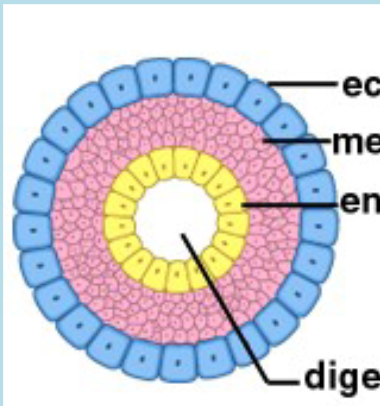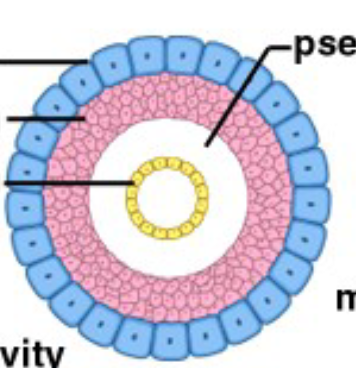11BIO UNIT 1: Diversity of Living Things
1/250
There's no tags or description
Looks like no tags are added yet.
Name | Mastery | Learn | Test | Matching | Spaced |
|---|
No study sessions yet.
251 Terms
Biodiverisity
The number and variety of species and ecosystems on earth
genetic diveristy
the genetic variability (dna differences) among organisms of the same species
species diveristy
the number and variety of each species
structural diveristy
the variation of size, shape, distribution of individuals within an ecosystem
benefits of high biodiverisity
more sustainible, more niches filled, consistent food supply, natural beauty
threat to biodiversity, habitat loss
species might die if they cannot adapt to new environment (causes eg. forest fires, pollution, forest fires)
threat to biodiversity, over exploitation
relentless consumption, not enough for species’ survival (causes eg. overhunting, over fishing)
threat to biodiversity, pollution
chemicals released into atmosphere, poisoning organisms (causes eg. extraction, manufacturing)
threat to biodiveristy, invasive species
non-native species establish in new habitats, disrupting natural balance. can bring diseases and take over (if it doesn’t have predators). displaces local species causing extinction/lower population
threat to biodiveristy, climate change
statistical change in weather patterns over long periods of time. causes unpredicatble changes, organisms can’t survive confitions
fundamental unit to acsess biodiversity
the “species”
biological species concept
organisms capable of breeding freely with eachother under natural conditions and producing fertile viable offspring
limits of biological species concept
asexual reproduction, hybridization, fossils cannot mate, species seperated geographically
hybridization
when 2 species form a 3rd species
morpholgical species concept
organisms that share similar morphology
morphology
the study of physical appearance and characteristics
limits of morphological species concept
individuals of same species can exhibit variations by colour, size, shape, sexual dimorphism
phylogenetic species concept
organisms that share a common ancestor, family history based on DNA
limits of phylogenetic species concept
evolutionary history is not always known for all species. difficult to obtain DNA samples from extinct organsims
taxonomy
the science of classifying (naming/identifying) all living and extinct species
4 ways to identify organsims
morphology, behaviour, gerographical location, genetics
binomial nomenclature
to simplify and ensure consistancy, each species has its own unique name (Genus capitilized, species lowercase, all in italics)
Carl Linnaeus
father of taxonomy, introduced binomial nomenclature and genra
genra
Linnaeus grouped species based on morphological characteristics
dichotomus key
series of branching, 2 part statements used to identitfy organsisms
traditonal 7 taxa
kingdom, phylum, class, order, family, genus, species
modern 8 taxa
domain, kingdom, phylum, class, order, family, genus, species
domain
organisms grouped based on phylogenetics
3 domains
Domain bacteria, domain archaea, domain eukarea
domain bacteria
consits of kingdom bacteria
domain archaea
consists of kingdom archaea
domain eukarea
consists of kingdom planae, kingdom fungi, kingdom anamilia, kingdom protista
6 kingdoms of life
archaea, bacteria, protista, fungi, anamilia, plantae (alex believed princess fiona ate poorly)
prokaryotes
kingdom archaea, kingdom bacteria
eukaryotes
kingdom plantae, kingdom anamilia, kingdom fungi, kingdom protista
meaning of prokaryote
before nucleus
prokaryote discovery date
3.5 BYA
size of prokaryote cell
0.1 - 10 um
are prokaryotes multi or unicellular
unicellular
dna location in prokaryotes
nucleoid region
dna sturcture in prokaryote
1 circular chromosone
reproduction of prokaryote
asexual
oxygen requirement of prokaryote cells
anaerobic or aerobic
cell wall in prokaryote cells
usually present, chemically complex, can be covered by a capsule
flagella in a prokaryote
simple, 2 protien building blocks
plasma membrane in prokaryote
no carbohydrates, lack cholesterol
meaning of eukaryote
true nucleus
eukaryote discovery date
1.5 BYA
size of eukaryote
10 - 100 um
are eukaryotes multi or unicellular
multicellular
location of dna in eukaryote
nucleus
dna sturcture in eukaryote
many linear chromosones
reproduction of eukaryote
sexual or asexual
oxygen requirement in eukaryotes
aerobic
cell wall in eukaryotes
chemically simple if present
flagella in eukaryotes
complex
plasma membrane in eukaryotes
carbohydrates and cholesterol present, serve as receptors
anaerobic
doesn’t use oxygen
aerobic
requires molecular oxygen to get oxygen from organic molecules
autotroph
synthesizes their own organix compounds
photoautotroph
uses light (photosynthesis) to form new organic compounds
chemoautotroph
uses chemical compounds to form new organic compounds
heterotroph
obtains energy molecules from consuming other organisims, cannot synthesize their own organic compounds
peptidoglycan
substance in cell walls of bacteria, gram stain purple if present (positive), pink stain if not present or an outer capsid covering wall
asexual reproduction
identical offspring produced
sexual reproduction
non-identical offspring produced
phlogeny
the science of evoltionary relatedness among species
evolution
theory that explains the changes of species overtime and their shared ancestory
phylogenetic tree
diagram depicting evolutionary relatedness between dfifferent species
cladogram
shows hypothesises of evolutionary hustory based on shared characteristics
clade
taxonomic group including a single common ancestor and its decendants
cellulose
complex carbs in plants
chintin
complex carbs in fungi
peptidoglycan
protien/carb combo in bacteria
glycoprotien
protien/carb combo in archae
are anamalia eukaryotic or prokaryotic
eukaryotic
are anamalia uni/multicellular
multicellular
are anamalia aerobic/anaerobic
aerobic (use cellular respiration)
can animals move
yes, they’re motile
do animals reproduce sexually or asexually
sexually
are anamalia heterotrophic or autotrophic
heterotrophic
how do animals gain nutrients
internal digestion
germ layers
layers of undiferentiated cells in a developing embryo that will eventually specialize into true tissue
parazoans
organisms with 1 germ layer, lack true tissue
metazoans
organisms with 2+ germ layers, have specialize tissue
phylum porifera (how many germ layers)
1 germ layer; lack true tissue
phylum cnidaria and ctenophora (how many germ layers)
have 2 germ layers
ectoderm
the outer germ layer (skin, nerve tissue, sensory organs)
mesoderm
middle germ layer (muscles, blood, reproductive organs)
endoderm
inner germ layer (lungs, liver, bladder)
gastrulation
development of germ layers
blastula stage
1 germ layer - a hallow ball of cells
symmetrical
a balanced body plan
assymetrical
irregular body plan
radial symmetry
balance aroiund the central axis
bilateral symmetry
balance along the midline
coelom
fluid filled cavity, the main bosy cavity that contains and holds organs in place

acoelomate
lacks coelom, the simplest organisms. the internal organs are held in place by layers of tissues

coelomates
has a full coelom that is surrounded by mesoderm and lined with a peritoneum that formed from the mesoderm

pseudoceolomates
have an intermediate coelom that is partially surroinded by mesoderm